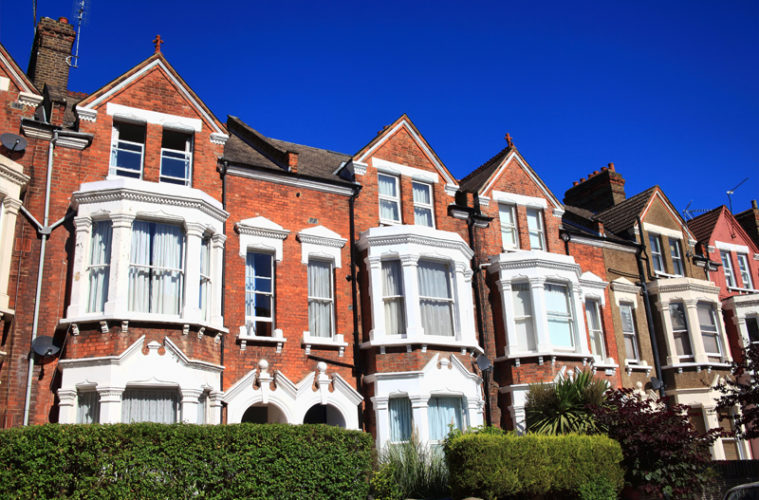The range of buildings in London span many hundreds of years, with various housing developments occurring after various historical events. The UK’s largest urban area is still a proud home to a great many architectural examples typical of Tudor, Georgian, Victorian and Edwardian, post Wartime, Neo-Shaker, Art Deco or the functional Brutalist era are stunningly showcased throughout the capital. The development of idyllic suburbs such as Ealing or Hampstead continue to succeed after their purpose-built days, with modern architecture creating at least the feeling of space in a place where there is often, infamously limited extra room. There are countless new developments that are built ‘upwards’, with cubist leaning, brightly-coloured balconies in luxury residential complexes being offered up as apartments and even first family homes to first-time buyers.
Urban sprawl
To combat urban sprawl, and make the most of limited ground space, London’s ambitious designers are battling to conserve the fascias of old pavilions and while expanding the prospects for living space. There are a great many housing projects currently in development, involving the demolition of old sink estates, replaced with new builds for private sale. The new building work concurs with new infrastructure, with many recent news sources such as the Guardian citing that the new ‘Crossrail’, will ‘reignite regeneration’ in central London. While the projects are undoubtedly improving an area’s aesthetic, the dismantling of communities, however desirable, compromise the quirks and hubs of cultural melting pots.
Local areas subject to flashy new housing developments are seeing opposition from residents in many outer London boroughs, with protest and appeals to councils to preserve the listed buildings, railway arches, churches and landmarks found in each characteristically different part of the conurbation. With many terraces built in Victorian, Georgian or Edwardian times, the array of design styles around the capital reflects the huge amount of history the city holds. With many roomy terraced properties in zones two, three and four rapidly shooting up in price, the valuation of properties with original bay windows, wooden floors, high ceilings and original plasterwork, coving and fireplaces offer a charismatic canvas to work with when decorating a home. These properties, many listed, now have an added desirability in an ever changing city that seems intent on adding more smooth, brightly-coloured fascias to futuristic apartment blocks.
The many Victorian homes in London are now often ‘grade II listed’, meaning that owners or landlords of these properties are responsible for the preservation of original features of the structure, and require consent from local authorities for any alterations, renovations and repairs. With many specialist services in sash window replacement and wooden floor sanding, many listed properties still need to ensure energy efficiency and security – mainly achieved with door and window maintenance.
Blinds and Shutters
While shutters look great on many types of property, many London property owners invest in the wooden-louvre slats of varying shades and sizes to make the most of the window area as a design feature. Specialist services such as Homestyle, based in the South of England, offer a ‘home visitation service’, armed with swatches and prototypes of stunning woods and durable plastics to create perfectly fitted, bespoke shutters for any size and shape of window. Tailor-made, high quality, childproof and on trend, shutters look fantastic in most homes, befitting the issue of single glazing Victorian or Edwardian houses by improving the warmth and appearance of a home. While a financial investment, shutters and tailor-made blinds are an easy way to add value to a home – whether to buy or let – and can provide privacy in urban areas more than any other window barrier.
Made-to-measure shutters give a luxurious, decadent finish to a London home, and are the epitome of good design – mixing form and function to make the most out of living or work space. Monochrome colour schemes such as this feature by Houzz uses the effortless chic of dark wood or even black finished shutters. They look fantastic when blended with stunning neutrals, creams, black-framed artwork, faux-furs, while the iridescence of velvet caught by opulent lighting. This styling can transform a medium sized semi-detached house to make it feel as far away from urban, stark or bachelor as required. For a more cottage-like lounge or kitchen, warm wood tones or neutral window louvres can create the feeling of more light, especially with the addition of a well-placed mirror to create the sort of space and homely tranquility that is craved for within London’s busiest areas.

